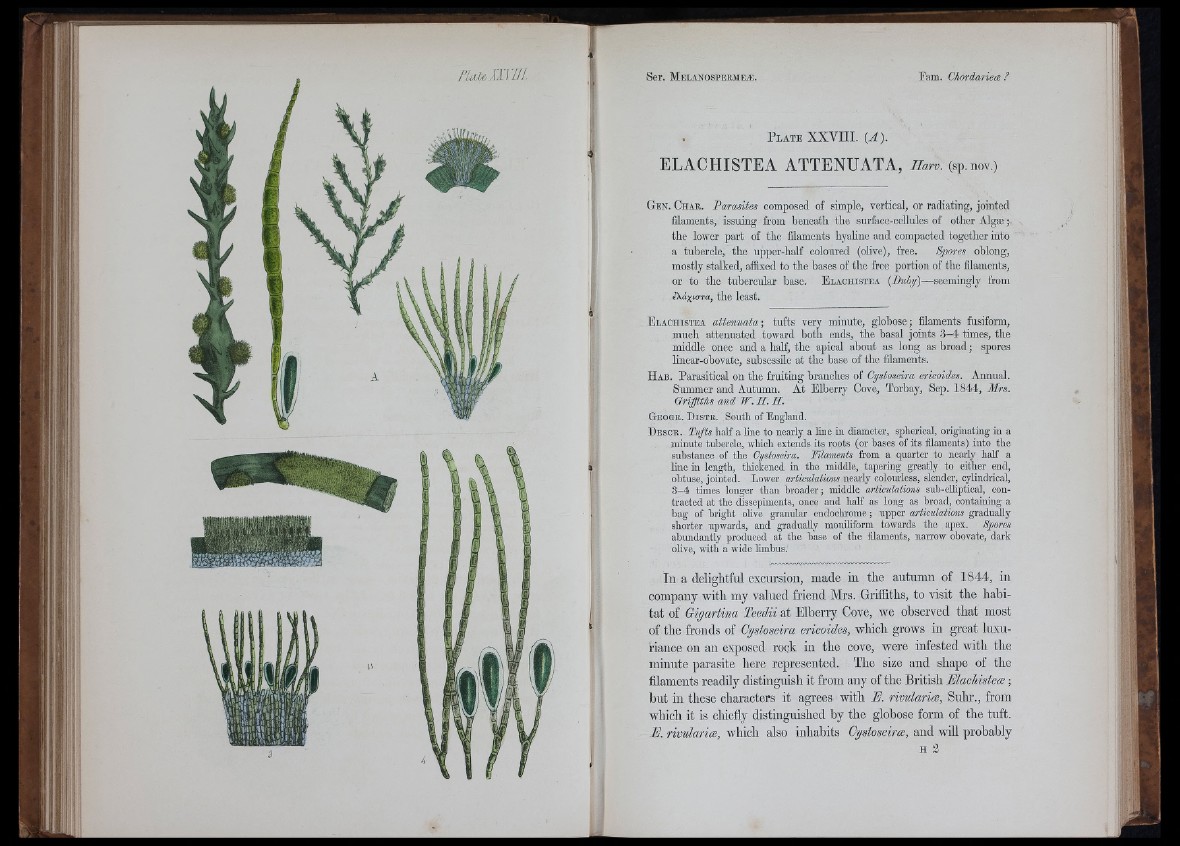
\
P l a t e XXVIII. [A).
ELACHISTEA ATTENUATA, liaw. (sp.nov.)
Gen. Char. Parasites composed of simple, vertical, or radiating, jointed
filaments, issuing from beneath the surface-cellules of other Algæ j
the lower part of the filaments hyahne and compacted together into
a tubercle, the upper-half coloured (oKve), free. Spores oblong,
mostly stalked, affixed to the bases of the free portion of the filaments,
or to the tubercular base. E laohistea seemingly from
e’Xaxio-ra, the least.
E laohistea attenuata; tufts very minute, globose; filaments fusiform,
much attenuated toward both ends, the basal joints 3Mi times, the
middle once and a half, the apical about as long as broad ; spores
Hnear-obovate, subsessile at the base of the filaments.
H ab. Parasitical on the fruiting branches of Cystoseira ericoides. Annual.
Summer and Autumn. At Elberry Cove, Torbay, Sep. 1844, Mrs.
id W .E .H .
G e o g r . D is t r . South of England.
D e s c r . Tvfts half a line to nearly a line in diameter, spherical, originating in a
minute tubercle, which extends its roots (or bases of its filaments) into the
substance of the Cystoseira. Filaments from a quarter to nearly half a
line in length, tlrickened in the middle, tapering greatly to either end,
obtuse, jointed. Lower articulations nearly colouiiess, slender, cylindrical,
3 -4 times longer than broader; middle articulations sub-eUiptical, contracted
at the dissepiments, once and half as long as broad, containing a
bag of bright ohve gTanular endochrome ; upper articulations gradually
shorter upwards, and gradually moniliform towards the apex. Spores
abundantly produced at the base of the filaments, narrow obovate, dark
olive, with a wide limbus.
In a delightful excursion, made in the autumn of 1844, in
company with my valued friend Mrs. Griffiths, to visit the habitat
of Gigartina Teedii at Elberry Cove, we observed that most
of the fronds of Cystoseira ericoides, which grows in great luxuriance
on an exposed rock in the cove, were infested with the
minute parasite here represented. The size and shape of the
filaments readily distinguish it from any of the British MacMstece ;
but in these characters it agrees with F. rivularioe, Suhr., from
which it is chiefiy distinguished by the globose form of the tuft.
F. rivularioe, which also inhabits Cystoseira, and will probably